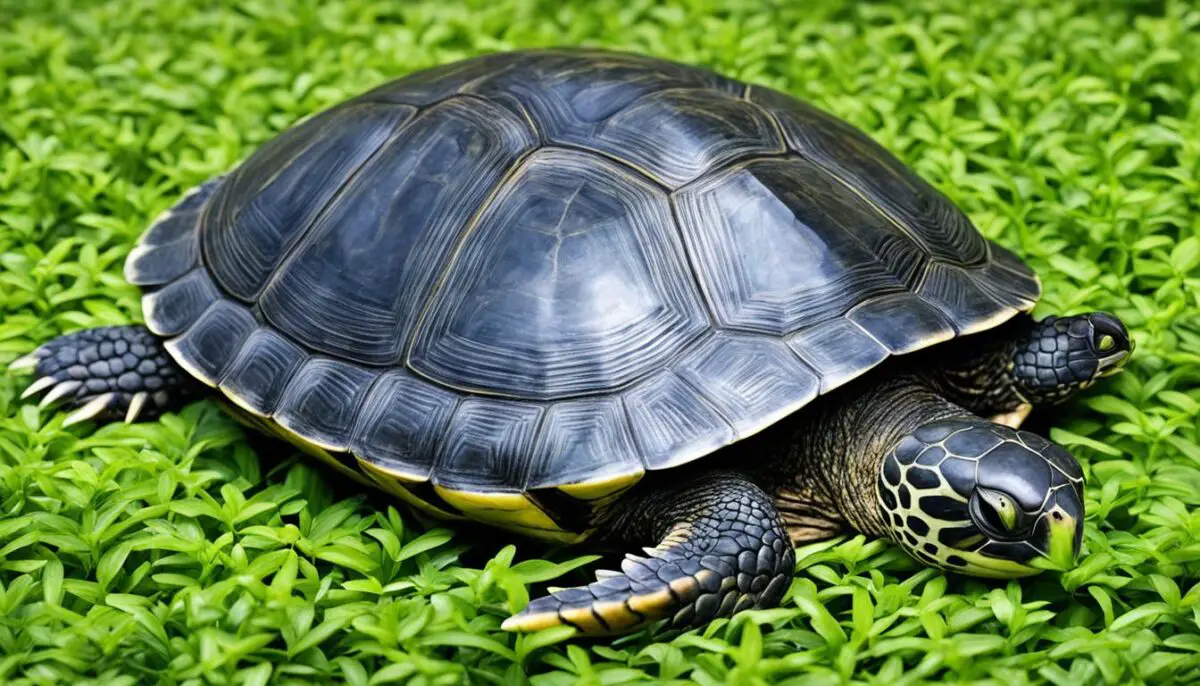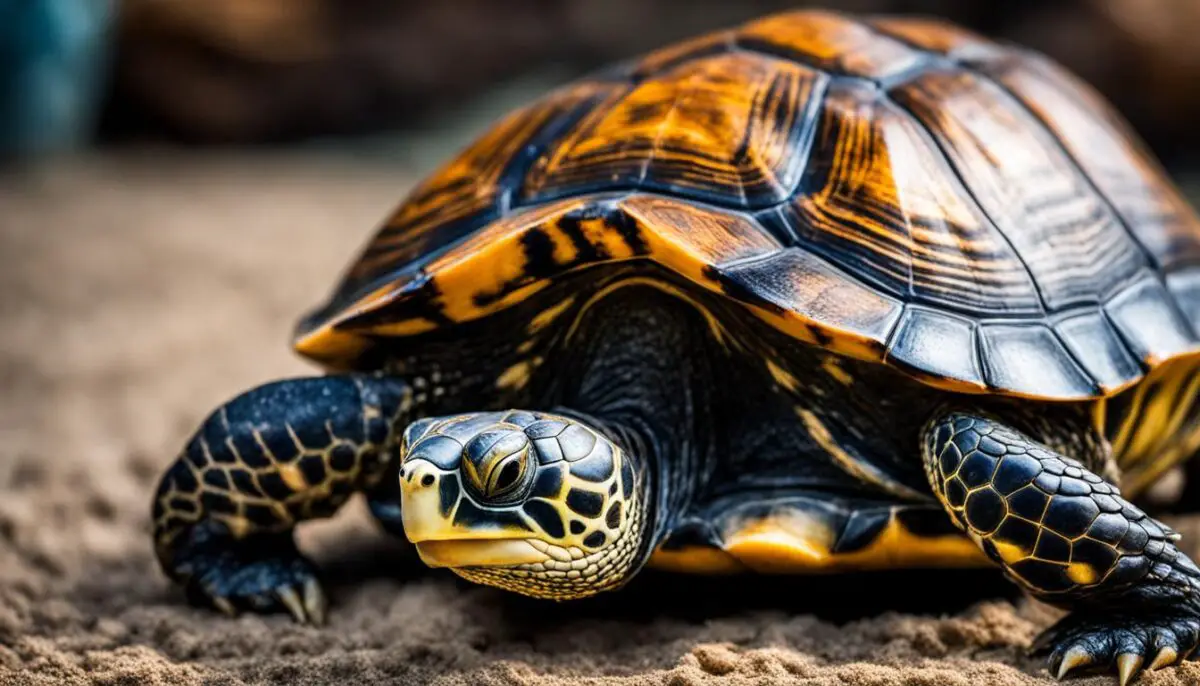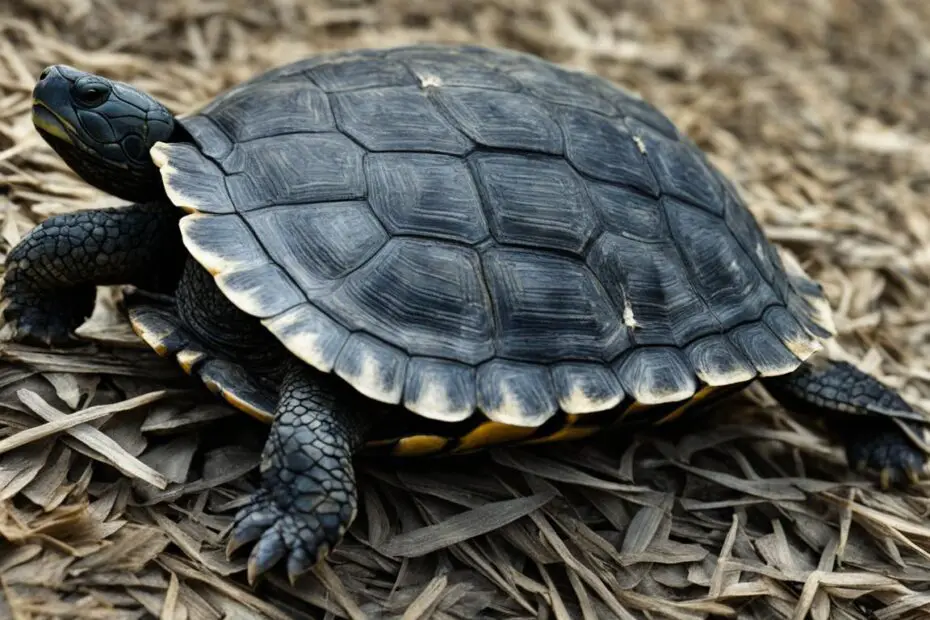A turtle’s shell is a unique and fascinating structure that serves as its armor and protection. However, it’s not uncommon for turtle owners to notice their pet’s shell peeling or shedding. While some degree of shell peeling is a natural and healthy process, excessive or abnormal peeling can indicate underlying issues that require attention. In this article, we will explore the causes of turtle shell peeling and provide essential care tips to ensure the well-being of your cherished reptile companion.
Key Takeaways:
- Shell peeling is a natural process for turtles as they shed their old scutes to allow for growth.
- Abnormal peeling may indicate health issues such as disease or shell rot.
- Causes of abnormal peeling can include infections, poor nutrition, environmental factors, and injuries.
- Healthy shell peeling is characterized by intact scutes falling off to reveal new growth, while unhealthy peeling may involve redness, swelling, or foul odor.
- Treatment for unhealthy peeling depends on the severity and cause, including changes in habitat, debriding, and veterinary care.
Causes of Turtle Shell Peeling
In addition to shedding scutes as part of their growth process, there are several other reasons why a turtle’s shell may peel abnormally. It is essential to understand these causes to ensure proper turtle shell health and care:
- Bacterial or fungal infections: These can weaken the shell, leading to peeling and shell rot.
- Poor nutrition: Inadequate diet or incorrect nutrient balance can contribute to weakened shell structure.
- Environmental issues: Factors such as high ammonia levels in the water, inadequate heat or UVB lighting, or unsuitable humidity levels can affect shell health.
- Injuries: Trauma to the shell, whether from accidents or attacks, can cause peeling and expose the underlying bone.
- Overfeeding: Excessive food intake can lead to obesity, putting extra stress on the shell.
- Basking in excessively hot areas: Prolonged exposure to high temperatures can dehydrate the shell, making it more prone to peeling.
- Low environmental temperatures: Insufficient warmth can slow down the metabolic processes responsible for shell health.
Identifying the underlying cause of shell peeling is crucial for effective treatment and overall turtle shell care. By addressing these factors, owners can help prevent, manage, and treat turtle shell problems.

Signs of Healthy and Unhealthy Shell Peeling
To determine whether a turtle’s shell peeling is normal or unhealthy, it’s important to observe certain signs. Healthy shedding is characterized by intact and whole scutes that fall off in one piece, revealing new growth underneath. The shell should appear normal, without deformities or exposed bone. Unhealthy peeling may involve redness, irritation, swelling, pitted or crumbling scutes, lethargy, foul odor, or visible wounds. These signs could indicate underlying diseases or infections that require veterinary attention.
When a turtle’s shell is shedding in a healthy manner, it is an essential part of their growth process. The old scutes naturally detach and are replaced by new ones, allowing for proper shell development. In a healthy peeling process, the scutes fall off effortlessly, and the turtle’s shell remains intact and smooth.
- Intact and whole scutes that fall off in one piece
- Smooth, normal-looking shell
- No deformities or exposed bone
On the other hand, unhealthy shell peeling can indicate a range of issues that require attention and care. Redness, irritation, and swelling on the shell’s surface may point to underlying infections or diseases. Pitted or crumbling scutes can be signs of poor shell health or nutritional deficiencies. Additionally, if a turtle appears lethargic or exhibits a foul odor, it may be suffering from an infection or shell rot.
Observing visible wounds on the turtle’s shell is also a cause for concern. These wounds may have been caused by injuries or indicate a more significant problem. Veterinary attention is crucial to properly diagnose and treat any underlying conditions causing the unhealthy shell peeling.
Recognizing Signs of Unhealthy Shell Peeling
To summarize, signs of unhealthy shell peeling include:
- Redness, irritation, and swelling
- Pitted or crumbling scutes
- Lethargy and foul odor
- Visible wounds on the shell
Identifying these signs can help turtle owners determine when their pet requires veterinary care to address any health issues. By monitoring the turtle’s shell and seeking prompt attention, owners can ensure the well-being of their shelled friends.
| Signs of Healthy Shell Peeling | Signs of Unhealthy Shell Peeling |
|---|---|
| Intact and whole scutes falling off in one piece | Redness, irritation, and swelling |
| Smooth, normal-looking shell | Pitted or crumbling scutes |
| No deformities or exposed bone | Lethargy and foul odor |
| Visible wounds on the shell |

Treating Unhealthy Shell Peeling
The treatment for unhealthy turtle shell peeling depends on the severity and cause of the condition. Minor issues can often be resolved by making changes to the turtle’s habitat to promote healing and prevent further damage. Here are some steps to treat peeling turtle shell:
1. Habitat Modification:
Inspect the turtle’s enclosure to identify any potential hazards or sources of irritation. Remove sharp objects or rough surfaces that may be causing the shell to peel. Ensure the water temperature and quality are suitable for the turtle’s species to support shell health and healing.
2. Debriding:
If the peeling is more severe or the shell is damaged, the process of debriding may be necessary. Debriding involves gently removing problem scutes that are loose, damaged, or infected. This process should be done with caution to avoid causing further harm to the turtle.
3. Antibiotic Treatment:
If there are signs of infection, such as redness, swelling, or foul odor, your veterinarian may prescribe antibiotic creams or injections. These medications can help combat bacterial or fungal infections that may be contributing to the shell peeling.
4. Nutritional Support:
Improving the turtle’s diet and ensuring proper nutrition is crucial for shell health. Consult with a reptile veterinarian or specialist to ensure your turtle is receiving a well-balanced diet with appropriate amounts of calcium and other essential nutrients.
5. Veterinary Care:
If the peeling persists or worsens despite home care, it is essential to seek veterinary attention. A qualified veterinarian will be able to provide a thorough examination, diagnose any underlying causes or conditions, and recommend appropriate treatment options.
Remember, each turtle is unique, and it’s crucial to consult with a reptile veterinarian for personalized guidance and treatment recommendations based on your turtle’s specific needs.
| Signs of Unhealthy Shell Peeling | Actions to Take |
|---|---|
| Pitted or crumbling scutes | Consider debriding or seek veterinary care |
| Visible wounds or signs of infection | Consult a veterinarian for antibiotic treatment |
| Foul odor | Seek veterinary advice |
| Lethargy or unusual behavior | Monitor closely and consult a veterinarian if symptoms persist |
By following these steps and maintaining a vigilant approach to your turtle’s shell health, you can effectively treat peeling turtle shell and promote a healthy, resilient shell for your beloved reptile companion.
Conclusion
Monitoring and maintaining a turtle’s shell health is essential for their overall well-being. Understanding the normal shedding process and being able to identify signs of unhealthy shell peeling are crucial for early detection and treatment. By providing a suitable habitat, ensuring proper nutrition, and seeking veterinary care when necessary, turtle owners can help prevent and address shell problems. Regular observation and prompt action are key to keeping a turtle’s shell in optimal condition.
Remember, turtle shell shedding is a natural process, but it’s important to differentiate between normal shedding and abnormal peeling. Watch for intact and whole scutes falling off in one piece, revealing new growth underneath. Be alert to any signs of redness, irritation, swelling, pitted or crumbling scutes, lethargy, foul odor, or visible wounds, as these could indicate shell diseases or infections.
To maintain turtle shell health, ensure the turtle’s habitat is free from sharp objects and provides the right temperature and water quality. Additionally, provide a balanced diet that includes the necessary nutrients for shell development. If you notice any concerning symptoms or changes in your turtle’s shell, consult a veterinarian experienced in reptile care for appropriate diagnosis and treatment.
FAQ
Why is my turtle’s shell peeling?
There are several reasons why a turtle’s shell may peel. It can be a natural shedding process as turtles grow, but it can also indicate health issues such as disease or shell rot. Other factors include bacterial or fungal infections, poor nutrition, injuries, environmental issues, overfeeding, basking in excessively hot areas, low environmental temperatures, and high ammonia levels in the water.
How can I tell if my turtle’s shell peeling is normal or unhealthy?
Healthy shedding is characterized by intact and whole scutes falling off in one piece, revealing new growth. The shell should appear normal without deformities or exposed bone. Unhealthy peeling may involve redness, irritation, swelling, pitted or crumbling scutes, lethargy, foul odor, or visible wounds. These signs could indicate underlying diseases or infections that require veterinary attention.
What can I do to treat my turtle’s unhealthy shell peeling?
The treatment for unhealthy shell peeling depends on the severity and cause. Minor issues may be resolved by making changes to the turtle’s habitat and maintaining optimal water temperature and quality. Debriding, gently removing problem scutes, may be necessary for more severe cases. Antibiotic creams or injections may be prescribed to treat infections. Improving the turtle’s diet and providing proper nutrition are also crucial for shell health.
How can I prevent turtle shell problems?
It’s important to monitor and maintain the turtle’s shell health. Understanding the normal shedding process and being able to identify signs of unhealthy shell peeling early on are crucial. Provide a suitable habitat, ensure proper nutrition, and seek veterinary care when necessary. Regular observation and prompt action are key to keeping a turtle’s shell in optimal condition.

